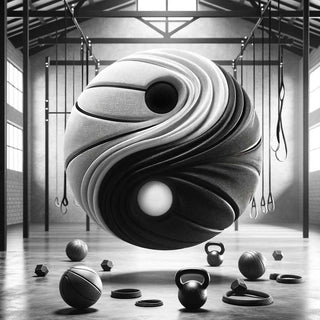At the core of athletic training and performance lies a crucial biological balance: anabolism and catabolism. Understanding these two fundamental processes is key for athletes striving to optimize their performance and recovery. This blog post delves into the world of anabolic and catabolic states, exploring their roles and how they're influenced by factors like the Testosterone to Cortisol (TC) ratio and physical load.
Understanding Anabolism and Catabolism
- Defining the Terms: Anabolism refers to the building up of complex molecules from simpler ones, a process vital for muscle growth, recovery, and overall health. Catabolism, on the other hand, involves the breaking down of complex molecules into simpler ones, releasing energy for the body to use.
- Athletic Context: In athletes, anabolism equates to muscle and tissue growth and repair, while catabolism is necessary for energy production during exercise.
The Role of Hormones
- Testosterone and Anabolism: Testosterone plays a crucial role in promoting anabolic processes, facilitating muscle growth and repair.
- Cortisol and Catabolism: Cortisol, often released in response to stress and physical exertion, fuels catabolic processes, aiding in energy release but also potentially leading to muscle breakdown if not balanced.
Balancing Anabolism and Catabolism
- Importance of Balance: For athletes, maintaining a balance between anabolism and catabolism is essential for optimal performance and recovery.
- Impact of Training Load: Different types of training (e.g., endurance vs. strength training) can shift this balance by influencing hormonal responses like the TC ratio.
TC Ratio: A Key Indicator
- Monitoring the Ratio: A balanced TC ratio is indicative of a healthy balance between anabolic and catabolic states. A higher ratio suggests a dominant anabolic state, favorable for muscle building and recovery.
- Impact of Exercise and Recovery: Intense exercise can shift this balance temporarily. Adequate recovery is essential to restore the anabolic state, crucial for muscle growth and repair.
Nutrition’s Role in Anabolism and Catabolism
- Dietary Influence: Proper nutrition supports anabolic processes (protein intake is particularly important), while certain foods and timings can influence catabolic activity.
Strategies for Optimizing Anabolic and Catabolic States
- Training Regimen: Balancing training types and intensities to manage hormonal responses and maintain a healthy anabolic-catabolic balance.
- Recovery and Rest: Prioritizing recovery practices, including rest days and quality sleep, to enhance anabolism.
- Nutritional Strategies: Tailoring diet to support muscle growth and energy needs, focusing on protein-rich foods and adequate caloric intake.
Anabolism and catabolism are two sides of the same coin in athletic performance. Understanding and managing these processes through careful training, recovery, and nutrition strategies can lead to improved performance, greater muscle development, and enhanced overall health. By monitoring indicators like the TC ratio, athletes can gain insights into their body’s anabolic and catabolic states, making informed decisions for training and recovery.
Much like the concept of Yin and Yang, represent opposing but complementary processes in an athlete's life.
-
Anabolism (Yin): This is the constructive phase of metabolism, where the body builds and repairs tissues. It's akin to the Yin aspect, which symbolizes growth, development, and nurturing. In athletes, anabolic processes are crucial for muscle growth, increase in bone density, and overall physical development. Activities that enhance anabolism include proper nutrition, strength training, and adequate rest. This phase is characterized by the synthesis of complex molecules like proteins and nucleic acids from simpler ones, using energy in the process.
-
Catabolism (Yang): Contrasting anabolism, catabolism is the destructive phase where the body breaks down molecules to produce energy. This corresponds to the Yang aspect, representing action, transformation, and dynamism. In the athletic context, catabolic processes are essential for providing the energy needed for physical activities. It involves the breakdown of complex molecules like carbohydrates and fats to simpler ones, releasing energy. High-intensity workouts, endurance training, and competitive sports often trigger catabolic states.
For optimal performance, athletes need a balance between these two states. Just as Yin and Yang are interdependent, anabolism and catabolism are interconnected in the metabolic cycle. Overemphasis on one (like excessive training leading to prolonged catabolism) without the counterbalance of the other (adequate rest and nutrition for anabolism) can lead to issues like fatigue, injury, or underperformance.
This balance is crucial in an athlete's routine, where disciplined training (Yang) is harmonized with proper nutrition and recovery (Yin) to achieve peak performance and health.

